Santa Pola resolves odours and overflows with a Flovac system
The Flovac vacuum system is one of the most innovative and longest in Spain – The vacuum system installation, executed over the past 8 years have allowed prevention of salinity problems in the town. With this system, the City of Santa Pola collected wastewater generated for 12,900 homes for later use mainly on irrigation
Spains largest vacuum system is near completion. It is a technological solution to solve the problems the utility in Santa Pola were suffering as it was built on a cattle farm located on salt marshes , which has a subsoil of sand.
This caused problems of infiltration and unstable ground conditions. Seawater infiltration resulted in increased salinity of the water, which greatly impaired the biological process of purification of the wastewater.
To solve this problem the city has installed a Flovac vacuum sewerage system. Flovac installed pipes up to 315 mm diameter, inside which is a constant vacuum of -0.5 and -0.6 atmosphere is maintained by vacuum pumps.
 Vacuum valves are opened by the difference in air pressure automatically and take in the wastewater from pits. No electricity at the pips is required. The pressure differential allows sewage to flow into the vacuum station and then it is pumped to the Treatment Plant.
Vacuum valves are opened by the difference in air pressure automatically and take in the wastewater from pits. No electricity at the pips is required. The pressure differential allows sewage to flow into the vacuum station and then it is pumped to the Treatment Plant.
There were a number of benefits to the community and to the operators with reduced construction costs and impact on businesses and residents. Operators, who use the monitoring system, note reduced blockages and odours and time at site.
The monitoring system allows operators to know exactly when they are needed and where to go.
A number of other towns with similar problems and now talking to Flovac.



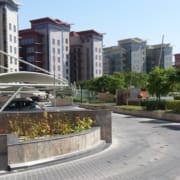


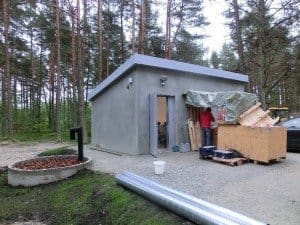 Merko, the leading construction company in Estonia has finished construction in Vääna-Jõesuu of Estonia’s second vacuum sewerage system – Flovac’s first system was completed last year in Leppneeme and has performed better than expectations for both the community and the operators.
Merko, the leading construction company in Estonia has finished construction in Vääna-Jõesuu of Estonia’s second vacuum sewerage system – Flovac’s first system was completed last year in Leppneeme and has performed better than expectations for both the community and the operators.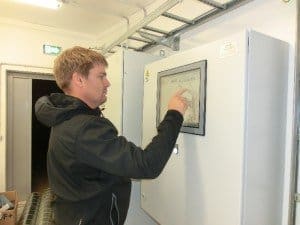 “A vacuum station and waste water pumping station were built in the Puraviku tee and Nõmmerohu tee area, as well as 3.8 km of drinking water piping and 4.1 km of sewerage piping, including nearly 3.6 km of vacuum sewerage piping. The benefit of vacuum sewerage is efficiency – the sewerage pumping station does not have to pump excess water, since the watertight vacuum sewerage system takes in significantly less water from rainfall, snowmelt, leaking pipes and wells than ordinary sewerage systems. The vacuum sewerage tanks are waterproof and the tanks’ lids are 10-20 cm above the ground to prevent rainwater from leaking in from the lid,” Laidma explained.
“A vacuum station and waste water pumping station were built in the Puraviku tee and Nõmmerohu tee area, as well as 3.8 km of drinking water piping and 4.1 km of sewerage piping, including nearly 3.6 km of vacuum sewerage piping. The benefit of vacuum sewerage is efficiency – the sewerage pumping station does not have to pump excess water, since the watertight vacuum sewerage system takes in significantly less water from rainfall, snowmelt, leaking pipes and wells than ordinary sewerage systems. The vacuum sewerage tanks are waterproof and the tanks’ lids are 10-20 cm above the ground to prevent rainwater from leaking in from the lid,” Laidma explained.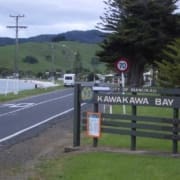
 The awards are named after Auckland City Waterworks Engineer, Arthur Mead, who performed the initial survey and created the designs for Upper Nihotupu and Hia Dams. They are awarded every year to projects that use sustainable features, deal with waste management, avoid negative environmental effects and promote community involvement.
The awards are named after Auckland City Waterworks Engineer, Arthur Mead, who performed the initial survey and created the designs for Upper Nihotupu and Hia Dams. They are awarded every year to projects that use sustainable features, deal with waste management, avoid negative environmental effects and promote community involvement. The celebrated project was designed by engineering consultancy Harrison Grierson with Flovac Systems and constructed by Fulton Hogan. Watercare took over the operation of the Kawakawa Bay system after it had been in operation for a year. Following the implementation of the system, ageing septic tanks in the area could be removed, helping to reduce pollution to local streams and
The celebrated project was designed by engineering consultancy Harrison Grierson with Flovac Systems and constructed by Fulton Hogan. Watercare took over the operation of the Kawakawa Bay system after it had been in operation for a year. Following the implementation of the system, ageing septic tanks in the area could be removed, helping to reduce pollution to local streams and Vacuum collection systems allow wastewater from each individual property to drain into a pit before going through a vacuum pipe network. This is controlled through the use of a pneumatically controlled vacuum interface valve in the pit.
Vacuum collection systems allow wastewater from each individual property to drain into a pit before going through a vacuum pipe network. This is controlled through the use of a pneumatically controlled vacuum interface valve in the pit.
 It’s a case of one down and 2599 to go at the biggest subdivision in Christchurch.
It’s a case of one down and 2599 to go at the biggest subdivision in Christchurch. In the second stage, Harakeke, 130 of the 230 sections have sold without being officially released to the market. Titles in that stage will be ready for buyers in June next year.
In the second stage, Harakeke, 130 of the 230 sections have sold without being officially released to the market. Titles in that stage will be ready for buyers in June next year. At 203 hectares, Prestons is on a site bigger than Hagley Park. It is next to the Bottle Lake Forest reserve, and the Waitikiri and Windsor Golf Courses.
At 203 hectares, Prestons is on a site bigger than Hagley Park. It is next to the Bottle Lake Forest reserve, and the Waitikiri and Windsor Golf Courses. He believes the geotechnical report that comes with each section is helping attract buyers.
He believes the geotechnical report that comes with each section is helping attract buyers.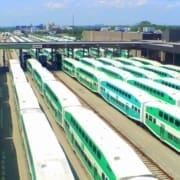
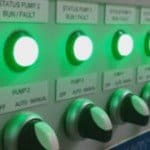 As trains come into the yard maintenance crews can hook up a vacuum hose via a fitting to the trains sewage holding tanks. The tank is evacuated via a push button control on the Flovac Valve. Sewage goes via a vacuum main back to a series of vacuum pumps and then discharged to the gravity network.
As trains come into the yard maintenance crews can hook up a vacuum hose via a fitting to the trains sewage holding tanks. The tank is evacuated via a push button control on the Flovac Valve. Sewage goes via a vacuum main back to a series of vacuum pumps and then discharged to the gravity network. The management team and operators at Willowbrook were particularly impressed with the speed of the evacuation of the trains as the process took a matter of seconds rather than the extensive delays that they have previously had. This meant that money was saved in labour costs but more importantly in the amount of time that it took to get the trains back into service.
The management team and operators at Willowbrook were particularly impressed with the speed of the evacuation of the trains as the process took a matter of seconds rather than the extensive delays that they have previously had. This meant that money was saved in labour costs but more importantly in the amount of time that it took to get the trains back into service.
 SCIRT partner McConnell Dowell is more than halfway through a big project to build a Flovac vacuum wastewater system in the Christchurch residential suburb of Shirley – the first area of the South Island to use such technology.
SCIRT partner McConnell Dowell is more than halfway through a big project to build a Flovac vacuum wastewater system in the Christchurch residential suburb of Shirley – the first area of the South Island to use such technology. After the earthquakes, the slope changed in many parts of the city, so wastewater was running in the wrong direction. The Flovac vacuum system will offer much greater resilience if there are further large earthquakes, especially in areas considered prone to liquefaction.
After the earthquakes, the slope changed in many parts of the city, so wastewater was running in the wrong direction. The Flovac vacuum system will offer much greater resilience if there are further large earthquakes, especially in areas considered prone to liquefaction. Wastewater will arrive at the Shirley catchments new pumping station, on Golf Links Road, from small collection chambers, usually located on the grass berm of a street, each serving up to four properties. The only visible parts in most streets will be collection chamber lids and man-holes at ground-level, while vent stacks will sit against property boundaries.
Wastewater will arrive at the Shirley catchments new pumping station, on Golf Links Road, from small collection chambers, usually located on the grass berm of a street, each serving up to four properties. The only visible parts in most streets will be collection chamber lids and man-holes at ground-level, while vent stacks will sit against property boundaries. Like in other parts of the city, wastewater from the new pumping station will go via the normal gravity system southeast to the wastewater treatment plant at Bromley.
Like in other parts of the city, wastewater from the new pumping station will go via the normal gravity system southeast to the wastewater treatment plant at Bromley.